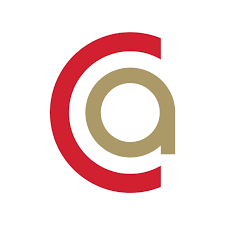Best Employee Rewards Platforms - 2025
Find the best employee rewards and recognition platform for your business in 2025. Our reviews are grounded in hands-on experience, in-depth research, live demos, real user feedback, and insights from independent experts — so you get advice that’s consistent, reliable, and genuinely helpful.









Need Help? Talk to an HR Software Advisor!
Tell us more about your company & an HR Software Advisor will help you find the right software
An effective employee reward program strengthens workplace engagement, boosts morale and HR efficiency, and reinforces company core values, all while cultivating a positive culture.
Improved Employee Engagement and Retention
With 77% of employees performing their best when engaged and appreciated, rewarding worker contributions have a tangible impact. That does not just stop at better staff performance; it also helps turnover rates. Gallup found organizations that prioritize rewards at work see a 56% decrease in the likelihood of employees seeking new job opportunities
You would also want to consider a program fostering peer-to-peer recognition, as recent data suggests that employees who feel recognized by their peers are five times more likely to feel valued and to invest in their work.
Increased Productivity and Innovation
Employee recognition statistics demonstrate that employees perform better and feel more motivated when their contributions are recognized. According to Gartner, a well-designed recognition program can lead to an 11.1% increase in average employee performance.
Also, when employees receive regular recognition, they are more likely to offer creative solutions and strive for higher performance. For instance, those recognized monthly are 36% more likely to report feeling productive and engaged compared to those recognized quarterly.
Higher HR Efficiency
Too often, HR professionals wear many hats and have multiple aspects they need to attend to, so any opportunity to streamline the processes should be seized. The best solutions have all manner of automation options to ensure that rewards programs are implemented consistently and fairly. These tools can automate everything from milestone celebrations, work anniversaries, and birthdays to onboarding—all in one user-friendly interface.
Strengthened Company Culture and Employer Brand
Implementing a well-planned rewards strategy with the help of employee rewards software is a surefire way to build positivity around your company brand.
Rewards don’t have to be financial, either: Plenty of well-known companies have received positive press coverage for the non-monetary incentives they offer to reward staff.
Benefits of Employee Rewards Systems
An effective employee reward program strengthens workplace engagement, boosts morale and HR efficiency, and reinforces company core values, all while cultivating a positive culture.
Improved Employee Engagement and Retention
With 77% of employees performing their best when engaged and appreciated, rewarding worker contributions have a tangible impact. That does not just stop at better staff performance; it also helps turnover rates. Gallup found organizations that prioritize rewards at work see a 56% decrease in the likelihood of employees seeking new job opportunities
You would also want to consider a program fostering peer-to-peer recognition, as recent data suggests that employees who feel recognized by their peers are five times more likely to feel valued and to invest in their work.
Increased Productivity and Innovation
Employee recognition statistics demonstrate that employees perform better and feel more motivated when their contributions are recognized. According to Gartner, a well-designed recognition program can lead to an 11.1% increase in average employee performance.
Also, when employees receive regular recognition, they are more likely to offer creative solutions and strive for higher performance. For instance, those recognized monthly are 36% more likely to report feeling productive and engaged compared to those recognized quarterly.
Higher HR Efficiency
Too often, HR professionals wear many hats and have multiple aspects they need to attend to, so any opportunity to streamline the processes should be seized. The best solutions have all manner of automation options to ensure that rewards programs are implemented consistently and fairly. These tools can automate everything from milestone celebrations, work anniversaries, and birthdays to onboarding—all in one user-friendly interface.
Strengthened Company Culture and Employer Brand
Implementing a well-planned rewards strategy with the help of employee rewards software is a surefire way to build positivity around your company brand.
Rewards don’t have to be financial, either: Plenty of well-known companies have received positive press coverage for the non-monetary incentives they offer to reward staff.
Employee Reward Software Pricing
Employee reward platforms are typically priced per employee per month or follow a marketplace pricing model.
Per Employee Per Month Pricing Model
A flat per-employee-per-month model is best suited to companies that regularly use the employee rewards platform—typically larger companies for whom paying by usage would be prohibitively expensive.
A typical per-employee-per-month pricing model for an employee reward system might look like this:
Marketplace Model
With the marketplace model, customers pay a variable amount based on their use of the tool rather than a flat rate.
If you don't make extensive use of the rewards software during any given period, your costs stay low. This model works best for smaller companies who may not use the platforms enough to justify the flat monthly fee.
Here’s an illustrative example of a marketplace model fee structure for employee reward programs:
About Us
- Our goal at SSR is to help HR and recruiting teams to find and buy the right software for their needs.
- Our site is free to use as some vendors will pay us for web traffic.
- SSR lists all companies we feel are top vendors - not just those who pay us - in our comprehensive directories full of the advice needed to make the right purchase decision for your HR team.









